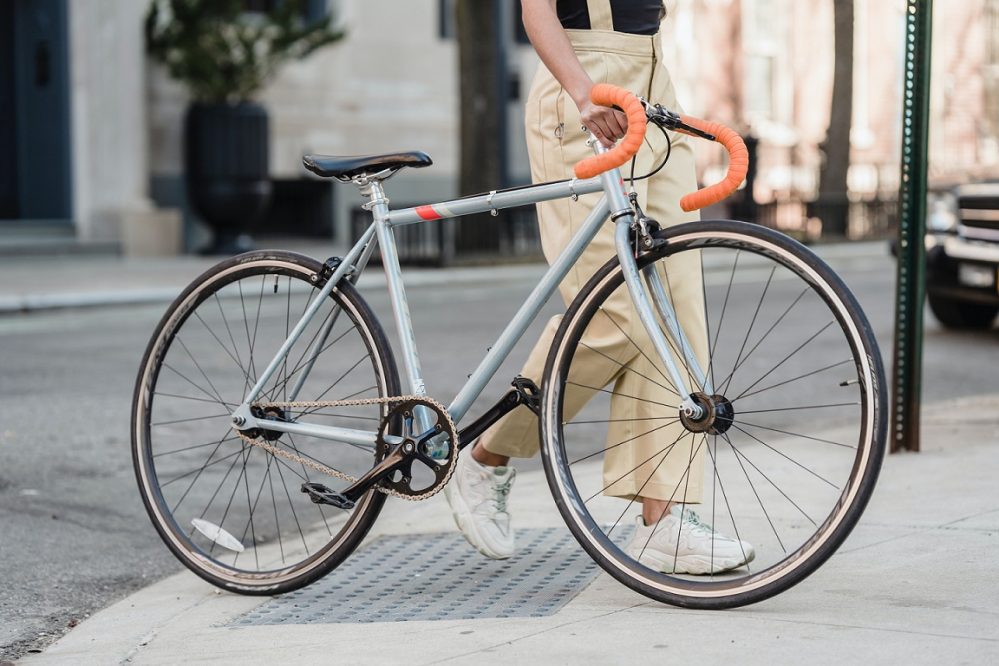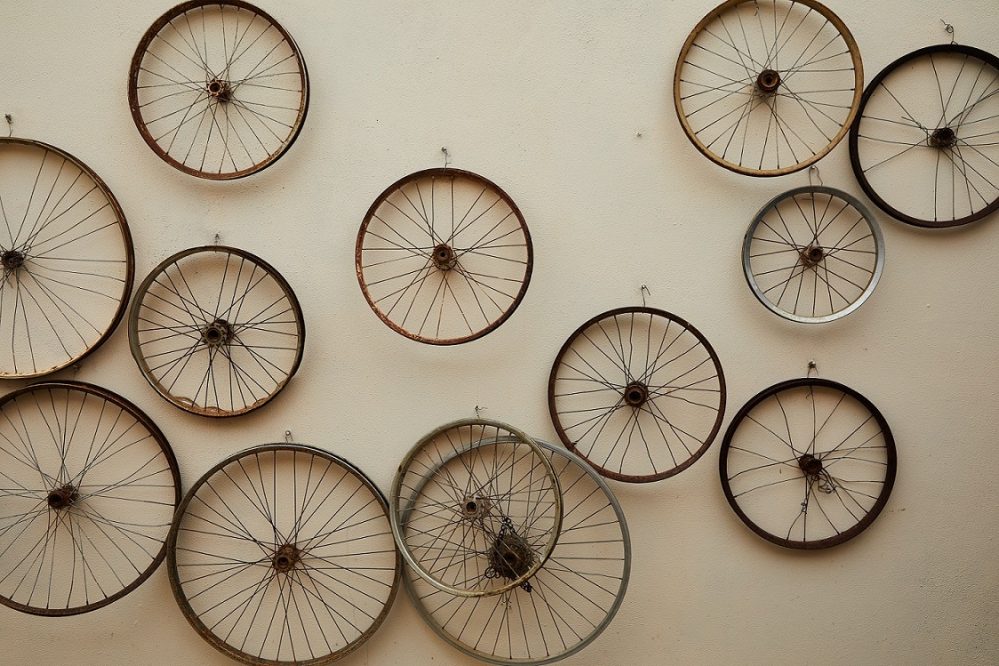Whether you are a new bicycle owner or an experienced cyclist, at some point, you will have to, or rather want to, learn how to lace a wheel. Although a simple task, at first sight, this can become a very burdening process without the proper guidance. In this article, we’ll try to make the process of lacing a bicycle wheel easier for you.
Why Build Your Own Wheels?

I know what you’re thinking, “Why build or lace the bicycle wheel myself when I can simply buy a pre-built one?” Yes, buying a pre-built wheel will be easier and sometimes cheaper, but there are a number of benefits building your own bicycle wheels has:
- Building your own bicycle wheels will enable you to create a superior product compared to pre-built products and enable you to modify the wheels according to your desire.
- Undertaking the task of building or lacing a bicycle wheel will enable you to gain valuable knowledge and experience, and this, in turn, will help you with future problems you may encounter and make you more self-sufficient in your bicycle’s maintenance.
- Building or lacing a bicycle wheel will make you appreciate your bicycle more and create an emotional bond between you.
So as we can see, the benefits of building or lacing a bicycle wheel yourself are many, and the hard work and the hassle of undertaking this task are well worth it.
Tools and Materials Needed
In order to lace a bicycle wheel,you will need the spare parts (the parts that make up the wheel) and then the tools that you will use to assemble the spare parts. Both of these types of tools are easily accessible in local bicycle or tool shops.
The spare parts you will need for this task are:
- Rims
- Hubs
- Spokes
The tools you will need are:
- Spoke key
- Medium flat blade screwdriver
How to Build a Wheel

Before starting the process of lacing a bicycle wheel, you need to measure the spokes to ensure they have the proper length for the respective wheel that you are using. To do this, you will need to get your spare parts and visit a local bicycle shop near you since this measurement can not be done at home.
Alternatively, you can use one of the calculators offered online to calculate the length the spokes need to be. After doing the measurement, you need to separate the spokes based on the side they will be installed on.
The bicycle wheel has two sides: the disc side and the non-disc side. The non-disc side is called the drive side in the back wheel, since that is the side that generates the drive-by being connected to the drive chain and wheel.
So in total, you will have four different spoke groups:
- The front non-disc side
- The front disc side
- The rear disc side
- The rear-drive side
Steps to lace a wheel

Step 1: Getting the first spokes through
Get your naked rim and locate the hole on the rim that is next to the left valve stem hole. Install the first spoke from the hub to that spoke hole that you located earlier. Then continue putting the other spokes in every other hole on the hub flange and every 4th hole on the rim.
Step 2: Connecting the other side
Locate the first spoke that you previously installed in the hole next to the valve stem hole. Look down the hub flange through that first spoke, locate the hole across the other side of the hub flange, and put the first spoke you installed into that hole and secure it. Then continue to put spokes on every other hole on the hub flange to the left of the spokes you installed in the beginning.
Step 3: Crossing the spokes

To cross your spokes properly, you need to rotate the hub, so the first spoke that you installed goes as far as possible from the valve hole. Now insert a spoke in any random hole in the hub flange, and cross the spoke on the opposite side of the spokes that you have installed so far. Cross the spoke over the two first spokes that it crosses and under the third one, then install it into the rim.
Step 4: Doing the threading
After all your spokes are inserted into the wheel, all you have to do is thread them down using a screwdriver to cover the spoke nipples so that all your spokes have equal length.
Wheel tensioning
Now after having completed the lacing of your bicycle, all your spokes are set and ready to go; it is time for you to decide the necessary tension for your spokes in order for your wheels to be stable.
Getting the right amount of tension
Tensioning is the amount of pulling force that is applied to a spoke on the wheel. The adequate amount of tension that you need on your wheel depends on what type of spokes and rims you are using.
In light of this, it is best to consult with your rims’ manufacturer about the amount of tension you should place on your spokes. Usually, the amount of tension for most wheels is around 980 to 1177 Newtons.
Measuring the tension
The most simple and reliable method of measuring spoke tension is to simply squeeze on the spokes. To do this, squeeze between two spokes on your newly laced bicycle wheel and do the same on another bicycle wheel that you know has good tensioning. In time you will be able to determine the acceptable amount of tensioning that your wheel spokes need to have.
However, the most accurate and precise way to measure the spoke’s tension is by using a spoke tensiometer. This tool flexes a spoke between two posts with a calibrated spring.
Tension adjustment
In case you need to adjust the tension, follow these steps:
- Correcting low tension: A wheel with low tension is adjusted by simply tightening the spokes.
- Correcting high tension: Turning the spoke nipple in the opposite direction. The same basic pro: make small, even adjustments to the entire wheel and re-check using the tensiometer.
Wheel truing
Wobbly bicycles are a major concern and can be very dangerous to ride. If your bicycle wheel is wobbly, tensioning the wheels won’t fix it. You need to true your bicycle wheel. In order to do this, you will need to disassemble your wheel and two main pieces of equipment:
- A truing stand
- A spoke wrench
Remove the wheel off your bike and put it in the truing stand. Begin to spin the wheel slowly and tighten the gauge or brakes as it spins until the wheel starts to make contact with the gauge. The twisted areas are where spokes need to be tightened. After you’ve identified the most twisted part of the wheel, start there, and then work on the smaller wobbles and wait to do all the fine-tuning in the end.
Next, identify the nipple that needs to be tightened in order to pull the rim back towards the center. If you have a part of the rim that’s twisted out to the right, locate the nearest nipple attached to the left side of the hub (opposite side of whichever lever it’s making contact with), and tighten that to pull it back into place with a full-turn.
In order to not over-tension the rim, bicycle experts recommend loosening the spokes on the opposite side of the one you tightened, with a half-turn. Spokes do need to be a little bit wiggly, that’s what allows the wheel to flex without everything just breaking. Even if during this process you mess up, don’t worry because it doesn’t do any permanent damage to your wheel. So after you have figured out how much to tension the spokes to get rid of the wobbling, you are ready and set to go.
Conclusion
Undertaking all of these processes to build, lace, and true your bicycle wheels can be very burdensome, but with proper guidance, equipment, and a little bit of passion it can be transformed into a very enriching experience that will make you more self-sufficient and passionate and will give you the opportunity to enjoy your bicycle rides more with a superior product made with your own hands.




